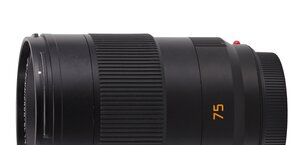Tamron SP AF 17-35 mm f/2.8-4 Di LD Aspherical (IF)
4. Image resolution

The performance at 35 mm is significantly weaker, though, but only because we compare it with splendid results at 17-24 mm. Actually the level is very good and typical for the class of high-end zoom lenses.
Please Support UsIf you enjoy our reviews and articles, and you want us to continue our work please, support our website by donating through PayPal. The funds are going to be used for paying our editorial team, renting servers, and equipping our testing studio; only that way we will be able to continue providing you interesting content for free. |
- - - - - - - - - - - - - - - - - - - - - - - - - - - - - - - - - - - - - - - - - - - - - - - -
It’s worth emphasizing here that the Tamron simply knocked out the Canon L-series 17-40 mm in this part of the test, being by f/2.8 more sharp that the Canon by f/4.0 (but perhaps a knock-out is too strong a word because in both cases we are still at a very high level, just distinguishing between a very good and a sensational performance). The Tamron also proved to be better than its other rival with exactly the same parameters – the Sigma 17-35 mm – although in this case the gain is smaller.

Rarely we deal with a perfect situation so the case of the Tamron 17-35 mm is hardly an exception to this rule. We must say that there are a lot of reservations to be had about the frame edge performance of the Tamron. While the lens fares at 35 mm focal length quite well, the result at 24 mm is rather average and the pranks we observe at 17 mm are simply outrageous. In this category the Tamron very noticeably lags behind its competitors.
 |






